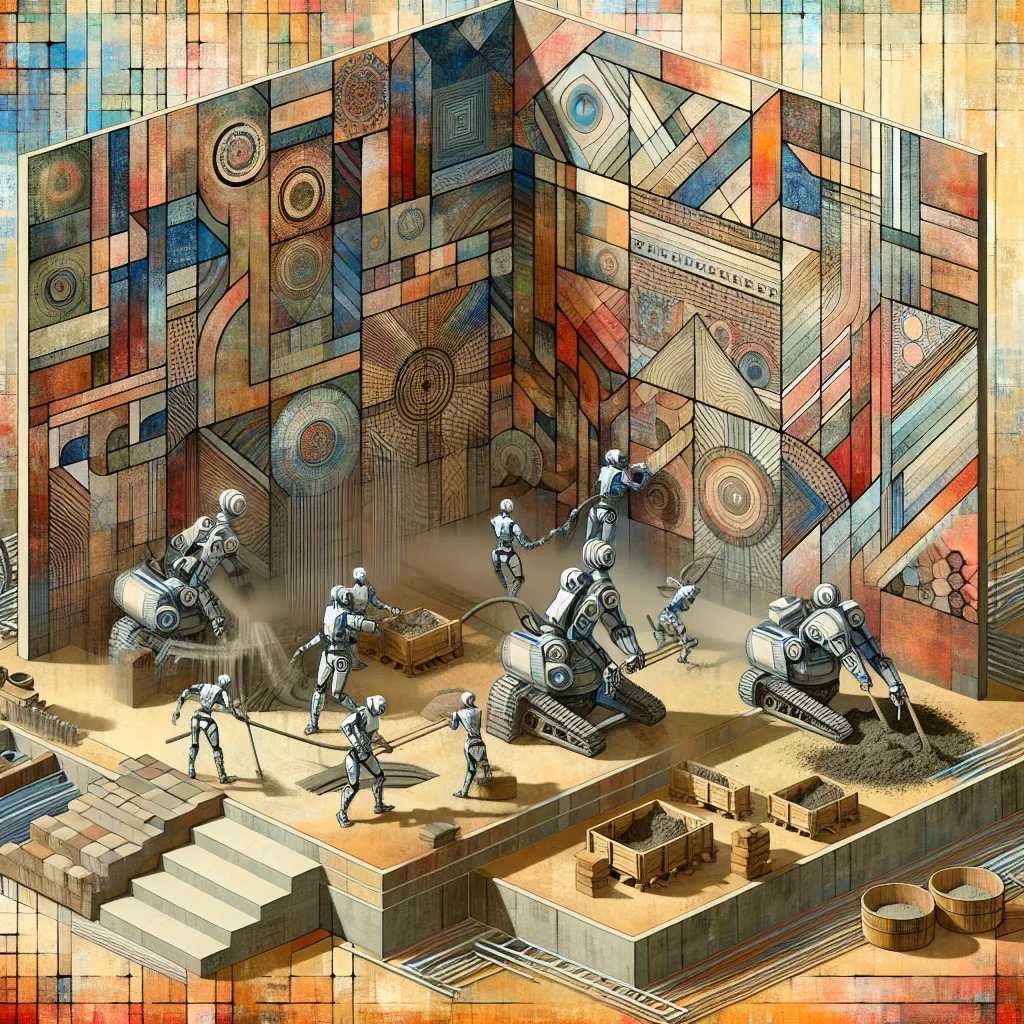
- Published on
- Authors

- Name
- Con Tech News
The Impact of Robotics on Concrete and Masonry Work
Modern construction is entering a new era of innovation, thanks to the advent of robotics. What was once considered science fiction is now an exciting reality. Robotics' impact on concrete and masonry work is immense, enhancing everything from efficiency and precision to safety and sustainability. Let's dive into this fascinating intersection of technology and industry to uncover the layers behind the transformative role of robotics.
Precision and Efficiency: The New Standard
When discussing concrete and masonry work, two factors come to mind: precision and efficiency. Traditional methods, while reliable, are often labor-intensive and time-consuming. Enter robotics, offering a standard of precision previously unattainable by human hands.
Automated Brick Laying
Consider the Hadrian X robot by Fastbrick Robotics. This robotic system redefines bricklaying by leveraging advanced automation to place bricks with millimeter precision. Armed with a 3D CAD model, Hadrian X can complete a house's brickwork in just a few days, significantly reducing construction time.
Concrete 3D Printing
Another groundbreaking technology is concrete 3D printing. Companies like Contour Crafting have pioneered large-scale 3D printing techniques to construct entire buildings. These systems extrude concrete layer by layer, following pre-programmed designs, and can create intricate structures with unmatched detail and speed.
Safety: A Priority Elevated by Robotics
Construction sites are notoriously hazardous. Traditional concrete and masonry work involves heavy lifting, repetitive tasks, and exposure to dangerous substances. Robotics introduces a solution to mitigate these risks, enhancing worker safety.
Heavy Lifting and Material Handling
Robotic systems are capable of handling large concrete slabs and volumes of brick, minimizing the need for human interaction with heavy materials. This not only reduces the risk of physical injury but also improves overall site efficiency.
Hazardous Environments
Robots can operate in environments too dangerous for human workers. Automated drones and ground robots can inspect and perform maintenance in confined spaces or at great heights, ensuring that human workers remain in safer, more controlled environments.
Sustainability: Building the Future Responsibly
The integration of robotics in construction doesn't just address efficiency and safety; it plays a pivotal role in sustainability. The precision of robotic systems leads to less material waste and more environmentally friendly construction practices.
Optimized Resource Use
Robotic construction techniques allow for exact material measurements, reducing excess use. This optimization is crucial in a world increasingly aware of resource limitations and environmental impact.
Eco-Friendly Construction Practices
Robotic systems can also integrate with eco-friendly materials, such as low-carbon concrete or recycled construction waste, further reducing the environmental footprint of construction projects.
Challenges and the Road Ahead
As promising as robotic integration is, it is not without its challenges. High initial costs, the need for specialized training, and the adaptation of current construction codes are significant hurdles. However, the trajectory of development is positive.
Cost and Accessibility
While the investment in robotic systems is substantial, the long-term savings and efficiency gains often justify the expense. Economies of scale and technological advancements are expected to reduce costs over time, making robotic solutions more accessible to mid-sized and smaller construction companies.
Training and Workforce Adaptation
Education and training programs are vital to ensure that the current workforce can adapt to and thrive in a robot-augmented workspace. Upskilling workers to operate and maintain these advanced systems will be an ongoing challenge, but also an opportunity for career advancement and industry growth.
Regulatory Adaptation
Current building codes and safety regulations need to evolve to accommodate robotic construction. Policymakers and industry leaders must collaborate to create frameworks that encourage innovation while maintaining high safety and quality standards.
Conclusion
Robotics is reshaping the landscape of concrete and masonry work, bringing a blend of precision, efficiency, and safety that traditional methods struggle to achieve. While challenges remain, the potential for robotics to revolutionize construction is immense and exhilarating. As we look to the future, embracing this technological evolution promises a construction industry that is more efficient, safer, and sustainable than ever before.
Stay tuned as we continue to explore the vast possibilities and real-world applications of robotics and innovation in the construction sector. The future is being built today, one robotic arm at a time!
